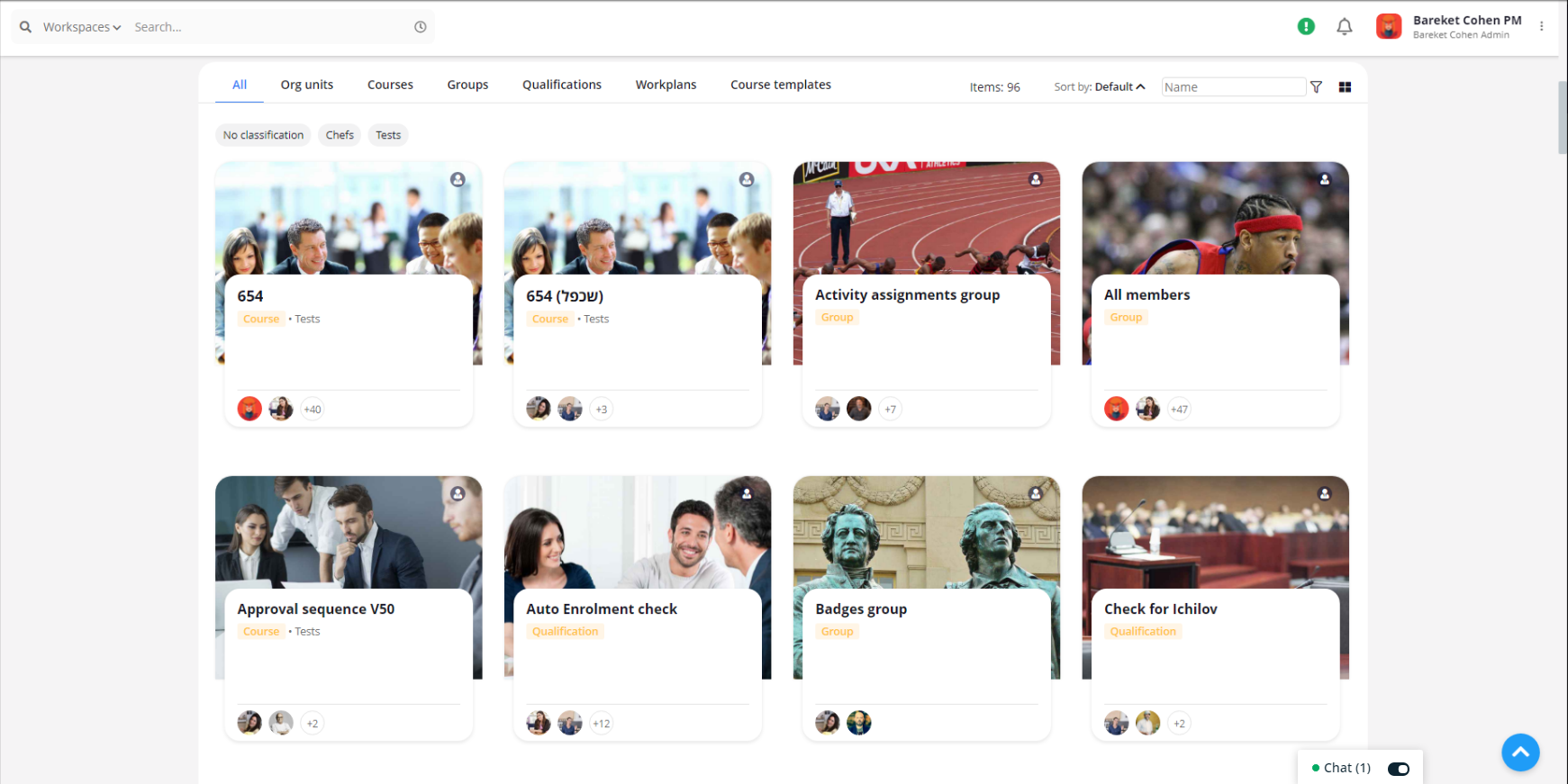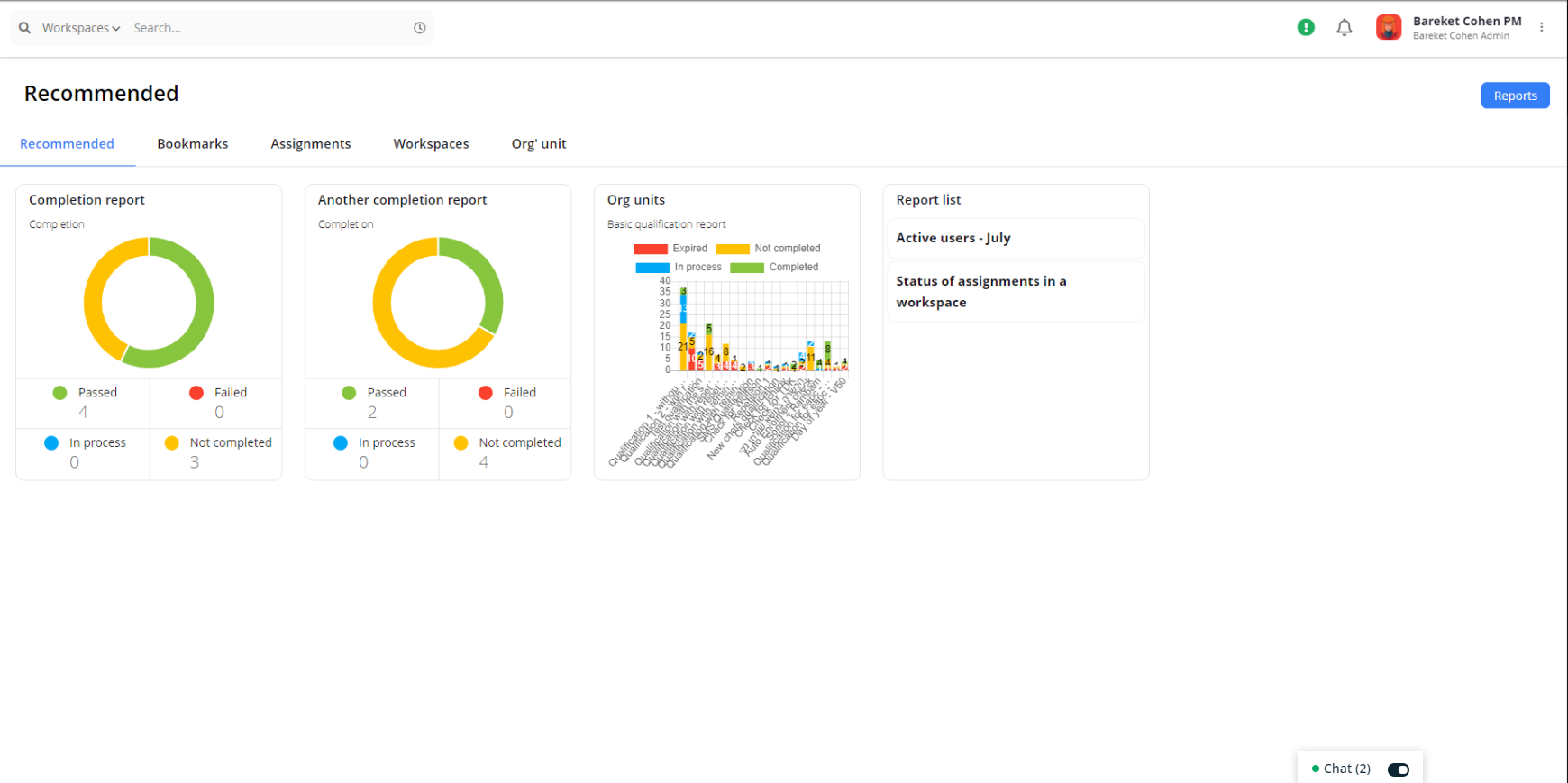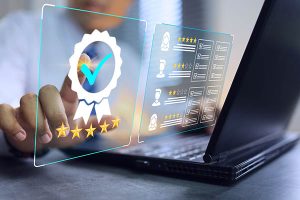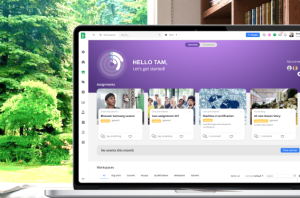Make full use of your LMS platform. This article will uncover five different LMS functions to democratize learning for your organization.
An LMS (Learning Management System) creates an organized, effective, and adaptable learning environment to support workforce development.
Given the vast range of tools and features embedded in LMS technologies, there is an initial learning curve to grasp its functionalities. However, understanding how to leverage these capabilities to democratize employee learning and development (L&D) can set your organization up for success.
Why is this important?
Because democratizing L&D is not just about providing access to educational resources; it’s a strategic approach that creates a workplace culture committed to improvement.
Organizations lacking democratic L&D initiatives may experience low employee satisfaction ratings, reduced organizational competitiveness, and a limited capacity to adapt to change.
Make full use of your LMS platform. This article will uncover five different LMS functions to democratize learning for your organization.
Why is democratic learning important?
Some 37% of employees say they will likely look for a new job within the next 12 months. Considering job satisfaction plays a critical role in the workplace for employees and businesses, democratic L&D programs empower employees and recognize their individuality–boosting job satisfaction.
As employee satisfaction impacts business performance, democratizing learning results in happier employees. And happy employees lead to satisfied customers.
Democratic learning aligns with fairness and inclusivity. This approach enhances the learning experience and prepares employees to be active, adaptable, and well-informed by:
- Promoting a culture of continuous learning. Organizations that democratize their employee training and development promote a culture of continuous learning. Learning is not seen as a one-time event but as an ongoing process. Upskilling and reskilling can be achieved through regular training sessions and access to continued educational resources.
- Building the next leaders. Democratizing learning involves leaders actively participating in and promoting learning initiatives. When leaders are committed to learning, it sets a positive example and reinforces the importance of ongoing education at all levels of the organization.
- Boosting employee engagement. Just 23% of employees are engaged at work. Organizations that democratize learning often implement systems for recognition and reward. Leaderboards, awards, and special badges boost motivation and engagement in the learning process.
- Promoting inclusivity. Learner-centric training ensures all employees have equal access to learning resources and opportunities regardless of their position or department. This may include workshops, online courses, and other educational materials.
- Aligning with organizational goals and objectives. Make sure your organization is well-prepared for the future. Employee-driven learning initiatives aligned with strategic goals can allow staff and the wider organization to stay at the forefront of industry advancements. It’s hardly surprising that aligning learning programs to business goals is a top focus for L&D leaders!
- Improved employee retention. According to the Society for Human Resource Management (SHRM), the average cost per hire is approximately $4,700. Providing democratic L&D opportunities signals to employees your organization is invested in their growth. This commitment to professional development can increase employee retention rates as individuals are likelier to stay with an employer that values their continuous learning.
- Enhanced collaboration. Democratizing education encourages collaboration and knowledge-sharing among team members. Employees engaging in learning experiences can bring new insights and skills back to colleagues–sharing new learning and fostering teamwork.
- Increased employee empowerment. By providing employees with the tools and resources to engage in continuous learning, democratic education empowers a workforce by promoting a sense of ownership over an employee’s professional development.
5 LMS functions to democratize learning
Let’s look at five ways to use your LMS platform better and democratize your entire L&D operations.
1. Onboard new hires
Lengthy onboarding processes delay the employee’s productivity, while rushing through it may result in essential information being overlooked.
Giving new employees a large amount of information quickly can overwhelm them–resulting in new hires struggling to maintain critical knowledge and ability to perform their roles. Plus, remote onboarding may lack the personal touch, making it challenging to build strong connections.
A customizable LMS, like Blossom, offers the tools to ensure an efficient and consistent onboarding experience across different teams or departments.
Features such as dedicated modules or courses specifically designed for onboarding and multimedia options allow you to incorporate company videos, presentations, and interactive content for your new team members. This makes onboarding content more engaging–creating a great first impression.
In addition, your LMS can help you maintain consistency with onboarding processes.
Let’s put that into practice and say your organization needs to comply with strict industry regulations. New hires in different departments currently receive varying levels of information and training–resulting in disparities in their preparedness and understanding of company policies.
By establishing consistent onboarding processes, your business can ensure that all employees, regardless of their department or location, receive essential compliance training at the point of onboarding. Flexible, modular systems offer a consistent approach that minimizes the risk of legal issues and ensures adherence to industry regulations.

But don’t take our word for it.
Doron Batsir, 365 Implementer IT Department at Plasson Ltd, says, “Before Blossom, it was very complicated and time-consuming tracking and managing training for our teams, as well as onboarding new employees. This problem has been alleviated with Blossom. It has saved time for managers now with a much faster and more efficient system.”
2. Cloud or on-premise
Gartner estimates that by the end of 2023, 48% of global employees will work remotely or in a hybrid model.
Considering remote and hybrid working arrangements are here to stay. A cloud-based LMS, for example, can save you money. Costs associated with traditional classroom training, like travel, venue rental, and printed materials, can be eliminated.
Your LMS can democratize learning by making education and training accessible to all employees, regardless of time constraints or geographical location. The platform facilitates this by providing 24/7 access to learning materials, allowing employees to learn at their own pace and schedule. This flexibility accommodates diverse learning styles and preferences, making learning more inclusive and accessible to a broader audience.
Many LMS technologies are mobile-compatible, so employees can access L&D activities using their mobile devices or computers.
Whether your LMS is cloud-based or on-premise and hosted locally on your servers, democratize learning within your organization by reducing operational costs associated with L&D events, productivity, and collaborating with workers.
Democratize learning and provide equal access to educational materials for all employees. Make sure that learning opportunities are not limited to a select few and are accessible to the entire workforce.
3. Progress tracking
Offering generic, one-size-fits-all employee training without considering individual needs and interests can affect enthusiasm. Workers feel disengaged and unmotivated when training is irrelevant to their roles or career aspirations. It’s why over three-quarters of L&D professionals think personalized learning is vital to employee engagement.
Support democratic learning by offering personalized learning paths. Boost engagement by allowing employees to choose courses that align with their individual development goals and job roles. This customization ensures that learning is relevant and tailored to the specific needs of each employee.

Get real-time access to comprehensive reports and analytics features. Your LMS can enhance the learning experience, support struggling learners, and ensure that L&D and individual objectives are met by:
- Identifying areas where employees may be struggling or need additional help
- Enabling targeted interventions to meet training gaps
- Monitoring progress, L&D professionals can adapt their teaching methods better to suit the needs and learning styles of individual employees
- Providing insights for L&D improvements, resource allocation, and the development of more effective learning strategies
- Evidencing skill development and knowledge acquisition–valuable for employees’ career development and your records when adhering to compliance regulations
- Recognizing and celebrating milestones and achievements based on progress, boosting employee morale
4. Discussion forums and social learning
Democratizing learning involves creating a community where individuals can learn from each other, share insights, and collectively contribute to the learning culture within your organization.
Utilize your LMS and incorporate collaborative features like discussion forums, social learning tools, and group projects. Encourage knowledge-sharing, chat, and collaboration among employees. Simple communication and collaboration features allow colleagues to take part in lively discussions.
Let’s put that into practice and say your customer service team faces challenges with managing demanding clients. Since social learning allows employees to tap into the collective intelligence of a team–it allows for quicker problem-solving and collaborative learning.
Secondly, when faced with questions, employees can use the platform to seek immediate help from colleagues–reducing the time it takes to find solutions.
Democratize learning and use your LMS to provide a variety of approaches. Allow employees to choose their own social learning experiences, like chat functions and group discussions, and make their learning experience more enjoyable and relevant. This approach enhances individual learning and contributes to a more collaborative and innovative workplace culture.
And when employees feel a sense of connection and community, it increases engagement with learning materials–giving a higher return on investment.
5. Continuous learning support
Use your LMS to provide employees with continuous learning support. User-friendly interfaces organize content in a way that is intuitive and easy to navigate. Remove any barriers that might prevent employees from accessing educational materials.
Besides user-friendly interfaces, your LMS platform offers feedback and evaluation mechanisms. Employees can provide course feedback, share learning experiences, and suggest improvements. This two-way communication ensures the learning content remains relevant, engaging, and aligned with the workforce’s needs. It empowers employees to actively participate in shaping the learning environment.
Democratize learning and encourage a culture of feedback and collaboration within the LMS. Features that allow employees to comment, ask questions, and share insights create a sense of community.
Use the platform to provide open access to a wide range of learning resources, such as articles, webinars, and external content. Keep employees informed about new ways of accessing support, updates about new courses, and achievements from one centralized platform.
Make better use of your LMS and democratize learning
Democratizing learning allows you to gain a competitive advantage. Use your LMS to its full potential and stay ahead of industry trends.
By innovating more effectively and responding quickly to market demands, your organization can have a well-educated and skilled workforce that’s fit for purpose now and in the future.
Democratize learning within your organization with Blossom. Schedule a demo today.







